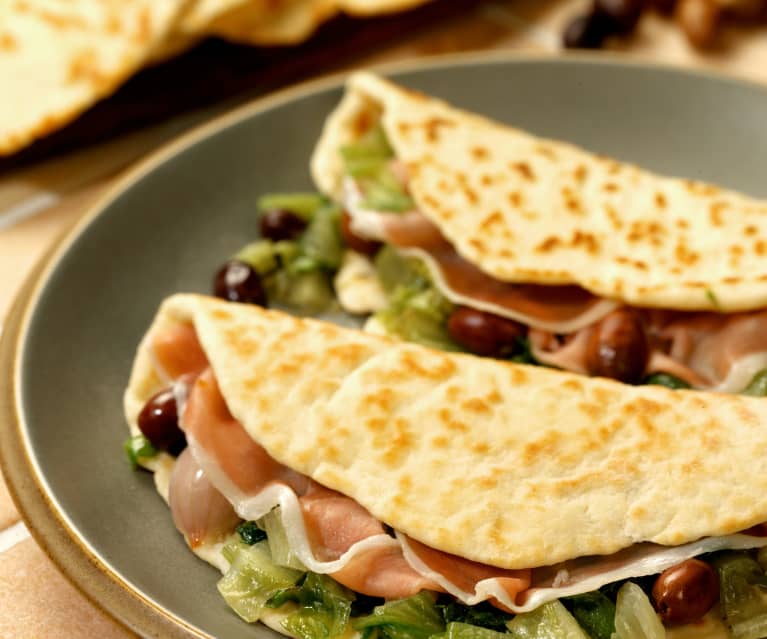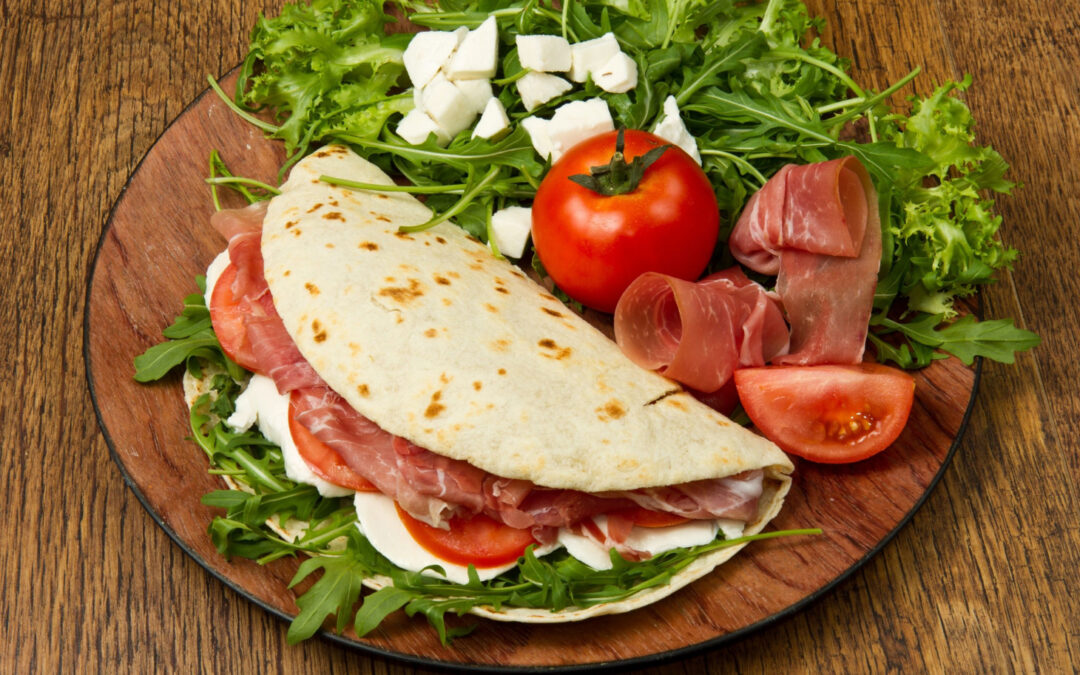Italian Flatbread - Piadina

Piadina is a traditional Italian flatbread that has a rich history dating back centuries. Its origins can be traced to the Emilia-Romagna region in northern Italy, where it has been a staple of local cuisine for generations.
The exact origin of piadina is a subject of debate, but it is believed to have been influenced by various cultures and historical events. Some theories suggest that it has roots in the ancient Roman era when soldiers would cook simple flatbreads on their shields over an open flame. Others believe that it may have been introduced by the Byzantines during their rule in Italy.
The word "piadina" itself is derived from the Romagnol dialect, which is spoken in the Romagna subregion of Emilia-Romagna. The earliest references to piadina can be found in historical documents from the 14th century, indicating its long-standing presence in the region.
Traditionally, piadina was made with simple ingredients that were readily available to farmers and villagers. The basic recipe includes flour, water, lard or olive oil, and a pinch of salt. The dough is rolled out into thin rounds and cooked on a hot griddle or stone. The result is a thin, unleavened bread that is both soft and slightly crispy.

Piadina has been a versatile and convenient food throughout history, often served as a quick and satisfying meal for peasants and workers in the fields. It was a practical way to make use of simple ingredients and provide sustenance during long days of labor.
Over the years, piadina has evolved, and various regional variations have emerged. In the 20th century, as transportation improved and regional cuisines became more interconnected, piadina gained popularity beyond its place of origin. Today, it is enjoyed throughout Italy and has even found its way to international markets.
Piadina is often filled with a variety of ingredients, such as cheese, cured meats, vegetables, and spreads, making it a versatile and customizable dish. It has become a beloved street food and a symbol of Italian culinary heritage.
In recent times, efforts have been made to preserve the traditional methods of making piadina, and it has been granted Protected Geographical Indication (PGI) status by the European Union, recognizing its cultural significance and unique qualities.
Whether enjoyed as a snack, a light meal, or a festive treat, piadina continues to be a cherished part of Italian culinary traditions, connecting the present with the flavors and history of the past.

Piadina Recipe;
Ingredients:
- 2 cups all-purpose flour
- 1/2 teaspoon salt
- 2 tablespoons lard or olive oil
- 1/2 cup water (approximately)
- Extra flour for dusting
Instructions:
- Combine Dry Ingredients:
In a large mixing bowl, combine the all-purpose flour and salt.
- Add Fat:
Add the lard or olive oil to the flour mixture. You can use a pastry cutter or your fingers to incorporate the fat into the flour until the mixture resembles coarse crumbs.
- Gradually Add Water:
Gradually add water to the flour mixture, stirring as you go. You may not need all the water, so add it slowly until the dough comes together. You're looking for a soft, pliable consistency.
- Knead the Dough:
Turn the dough onto a floured surface and knead it for about 5-7 minutes, or until it becomes smooth and elastic. This helps develop the gluten in the dough.
- Rest the Dough:
Place the dough back in the bowl, cover it with a kitchen towel, and let it rest for at least 30 minutes. This allows the gluten to relax and makes the dough easier to roll out.
- Divide and Roll:
Divide the dough into small, golf ball-sized portions. On a floured surface, roll each ball into a thin round, about 8-10 inches (20-25 cm) in diameter. You can use a rolling pin for this.
- Cook on a Griddle or Pan:
Heat a griddle or a flat pan over medium-high heat. Once hot, cook each piadina for 2-3 minutes on each side or until it puffs up slightly and has golden brown spots.
- Serve:
Fill your piadina with your favorite ingredients. Traditional fillings include prosciutto, cheese, arugula, tomatoes, or any combination that you prefer.
Enjoy your homemade piadina! Feel free to experiment with different fillings and variations to suit your taste.
Piadina recipe videos:
How Italians ACTUALLY Make "Flatbread";
How to Make Piadine (Italian Flatbreads);
Eat Like an Italian with this Cheese and Ham Flat Bread;
References;
- Romagna Piadina: from tradition to flavour. Archived July 22, 2011, at the Wayback Machine
- Buon appetito: Russian cosmonauts on a Mediterranean diet. April 27, 2004. Retrieved 28 October 2017
Thank you for sharing your time!
You can complete great comment tasks at here. #italian #flatbread #piadina #bakery #bread #cuisines #foodinspiration #food #chefs




































